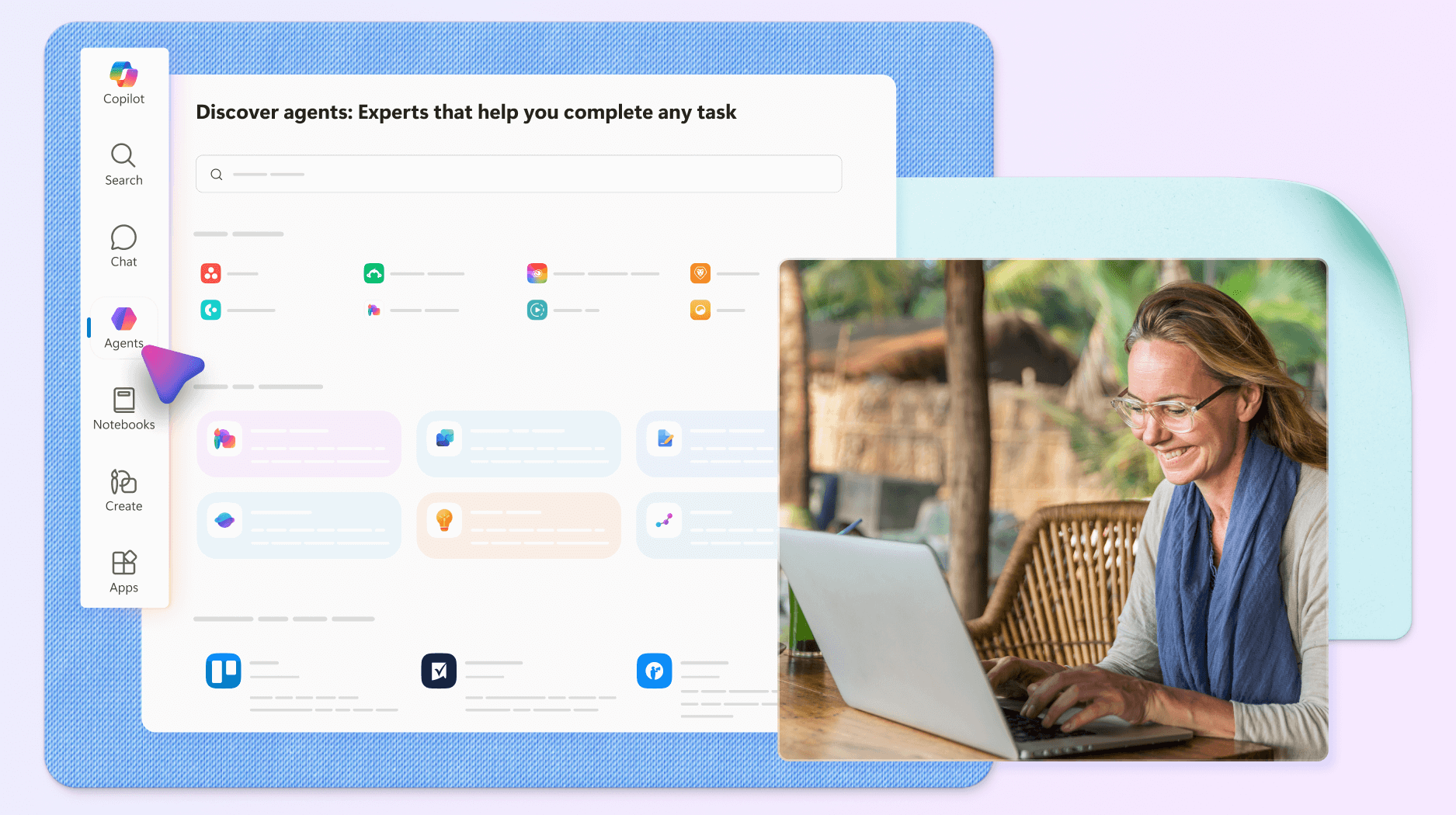What AI Agents Actually Are — and How They’re Transforming Business Now

Executive Summary: What Is Agentic AI and Why It Matters for Modern Enterprises
While many associate AI with copilots and chatbots, Agentic AI is far more powerful and business-relevant.
AI agents are autonomous systems that reason, plan, and take action independently to meet business objectives.
They are being adopted by forward-thinking companies across the UK and Europe to automate complex, dynamic, and high-value tasks that traditional automation tools can't handle.
Defining Agentic AI: The 3 Capabilities That Set It Apart
Agentic AI systems differ from passive AI in three fundamental ways:
- Cognitive Reasoning – Understand and navigate ambiguity, using logic and language to solve new problems.
- Goal-Oriented Planning – Break down complex business goals into executable steps across systems.
- Continuous Learning – Improve over time by learning from task outcomes, user feedback, and context.
These capabilities allow businesses to deploy AI agents not as tools, but as digital co-workers.
AI Agent Use Cases in the UK & Europe: Real Business Impact
Financial Services (UK, Luxembourg, DACH)
- Use Case: AI agents for loan onboarding, KYC and AML compliance
- Business Impact: 80% automation of manual reviews, 3× faster approvals
- Why It Works: Meets regulatory demands while speeding up client acquisition
Healthcare & Life Sciences (UK NHS, Nordics, Benelux)
- Use Case: Patient triage, referral coordination, claims processing
- Business Impact: 60% faster non-clinical workflows, GDPR-compliant record handling
- Why It Works: Lightens the admin burden on medical staff and accelerates care
Retail & E-commerce (UK, Germany, France)
- Use Case: Multilingual customer service, returns triage, product enrichment
- Business Impact: 70% reduction in Tier 1 support tickets, improved CSAT
- Why It Works: Reduces cost-to-serve while increasing speed and accuracy
Manufacturing & Logistics (Germany, UK, Nordics)
- Use Case: Procurement agents and predictive diagnostics
- Business Impact: Shorter lead times, fewer delays, faster supplier resolution
- Why It Works: Seamlessly integrates into ERP systems and reduces operational downtime
Common Misunderstandings About Agentic AI
-
"It's just an advanced chatbot."
Reality: AI agents plan, reason, and act across systems. -
"They replace humans."
Reality: Best used as digital co-pilots for human teams. -
"You need large datasets to start."
Reality: You can begin with API integrations and business logic. -
"All AI tools are the same."
Reality: Agentic AI is customised for specific business outcomes.
Top Tools for Building Agentic AI Systems
Low-Code AI Platforms (Good for UK SMEs or IT Teams Starting Out)
- Microsoft Copilot – Works inside Excel, Teams, Outlook
- Salesforce Einstein / Flow – Automate CRM workflows
- Google Duet – Enhance productivity tools
Best for: Rapid experimentation, internal team enablement
Custom Agentic AI Stacks (Best for Enterprises Scaling AI Across Operations)
- LLMs: GPT-4, Claude 3, Mistral (EU-compliant)
- Orchestration: LangChain, CrewAI, AutoGen
- Memory: Pinecone, Weaviate, Qdrant (EU-hosted)
- Action Layer: RPA (UiPath), API integration, webhooks
- Monitoring: Promptflow, MLflow, dashboards
Best for: UK/EU businesses needing GDPR compliance, multi-agent orchestration, or legacy integration.
Business Value: Measurable ROI from Agentic AI
- Task automation: 60–80% within 6 months
- Human handoffs: ↓ 30–50%
- Operational speed: 3–5× faster task resolution
- Cost per task: ↓ 40–60%
- Customer satisfaction: ↑ 10–20 NPS/CSAT points
UK-based enterprises often recover their AI investment in under 9 months.
Implementation Plan: How to Deploy Your First AI Agent in 30 Days
Week 1: Choose the Right Use Case
Look for:
- High-volume, repetitive processes
- API-accessible data
- Clear ROI metrics (time, cost, SLA risk)
Examples: Claims triage, support ticket routing, invoice matching, compliance checks
Week 2: Draft an Agent Charter
Include:
- Agent Objective
- Scope & Boundaries
- KPIs
- Escalation triggers
Week 3–4: Build and Deploy Your Agent
- If you're in Microsoft 365 or Salesforce: Use built-in tools to test concepts quickly
- If you need custom workflows: Build with LangChain, CrewAI, or AutoGen
- If you're unsure where to start: Book a discovery session
Ready to Automate Intelligently?
Start small. Scale smart.
- Deploy usable AI agents
- Automate 50–70% of business operations
- Stay compliant with UK & EU regulatory standards
Your next high-performing hire might not be a person—it could be an agent.


